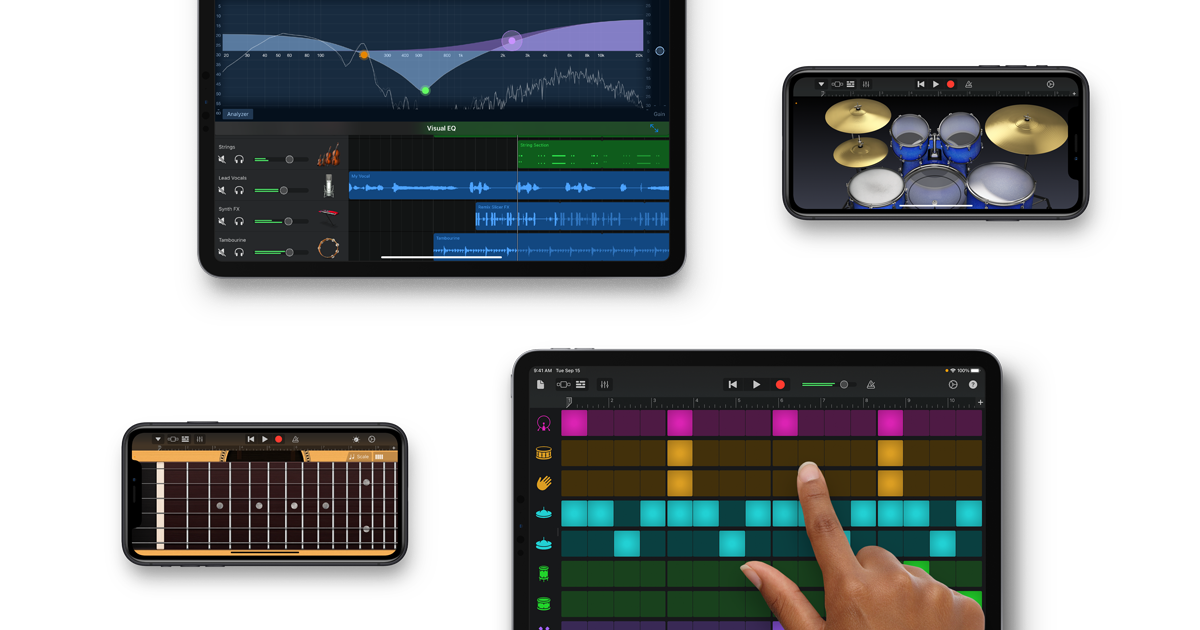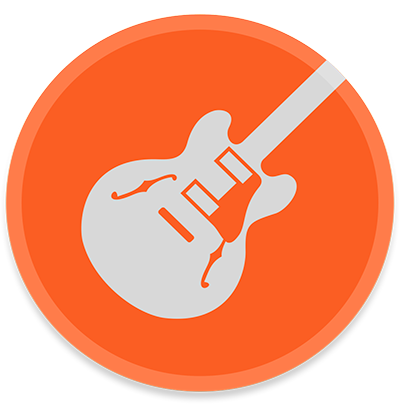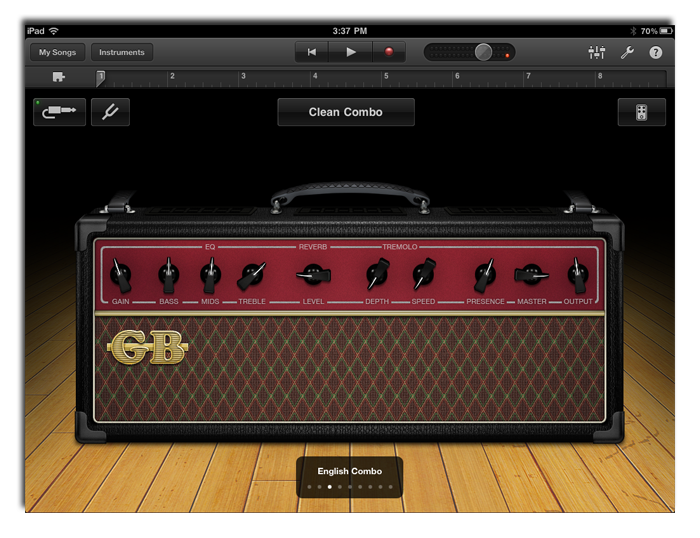
#Apple garageband logo pro#
“The dynamic between GarageBand and our pro product, Logic, is organic,” says Susan Prescott, vice president of apps marketing.
#Apple garageband logo professional#
Skylar Grey does this a lot.”ĭespite constantly updating GarageBand, however, Apple is careful not to market GarageBand as “too professional a product.” It also sells Logic Pro X for $199.99, and Susan Prescott, Appel’s VP of apps marketing, says the goal is to stay relevant for everyone: “There have been times an artist will bring in a vocal they recorded in Garageband just using a laptop internal microphone and it sounds cool. Dre and Eminem and also worked as an A&R executive at Warner. Some people are so good at making demos in GarageBand that they bring in something and I’m like, ‘We can use 80 percent of that as the final record if you want,’” says Mike Elizondo, who’s produced with artists such as Dr. Sometimes, however, the result from Garageband is so good it ends up being the final version: In the real-world, GarageBand is incredibly popular among artists as it’s an easy way to lay down the beginning of a track. In the digital reproduction of an American upright bass, a player in the studio plucks a string, holds his breath for seven seconds to ensure there’s no extra noise on the recording whatsoever as the note shivers into the air (engineers have custom-coded an app to time the duration precisely), and repeats the endeavor at different finger positions, volumes and pressures, day in and day out.

When it comes to creating GarageBand sounds, the report describes the excruciating process of reproducing an American upright bass: Gerhard Lengeling, who joined Apple 17 years ago. The GarageBand team is led by German engineer Dr. Apple’s Music Apps studio is in an unmarked building a few minutes away from Apple Park. Rolling Stone offers a detailed look at where Apple creates GarageBand sounds, and the team behind the process. Maybe someday the next John Lennon would discover their talent using the computer they got as a kid for Christmas.”

#Apple garageband logo software#
“Back when we were working on the original iMac, thinking about how the world was going to change around us, we were inspired by the idea of a new breed of software to connect all the things that were starting to appear. “GarageBand in 2004 came from an experiment in what we could do with computers,” Schiller said. Phil Schiller told Rolling Stone that the origin of GarageBand is largely from an “experiment” Apple performed in 2004:

The report is “the first media visit Apple has ever allowed to its Music Apps studio.” As GarageBand celebrates its 15-year anniversary this year, Rolling Stone is out with an inside look at how Apple creates the sounds in the app, the role of GarageBand in music production today, and more.


 0 kommentar(er)
0 kommentar(er)
